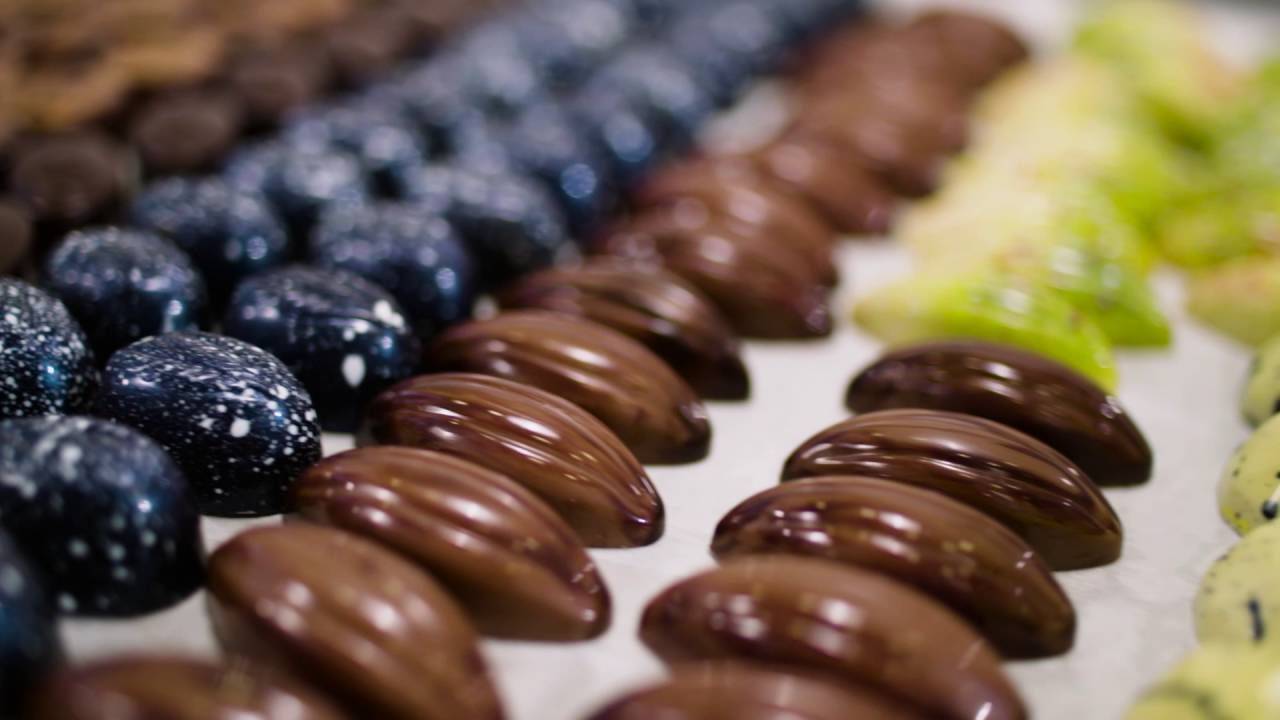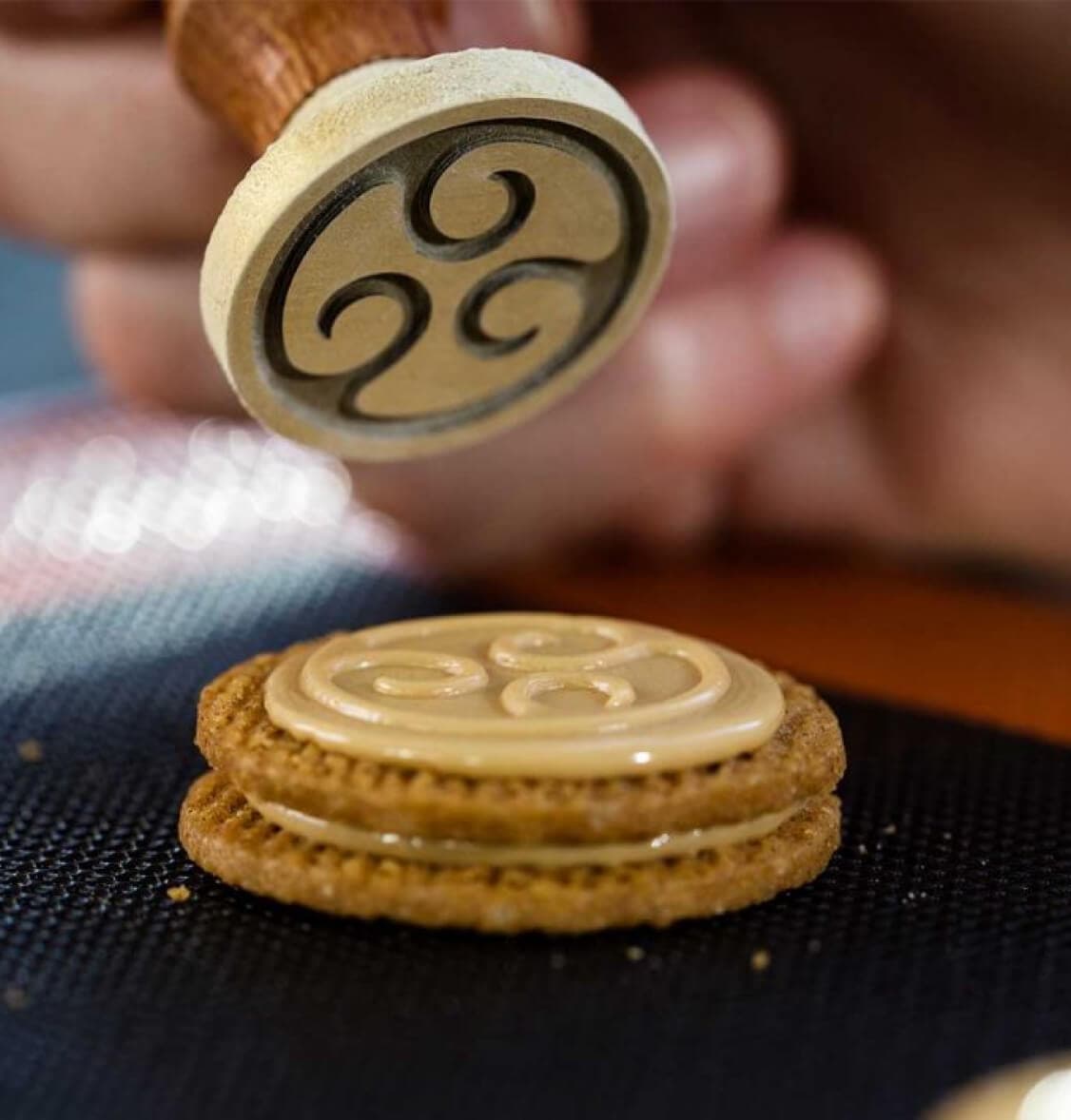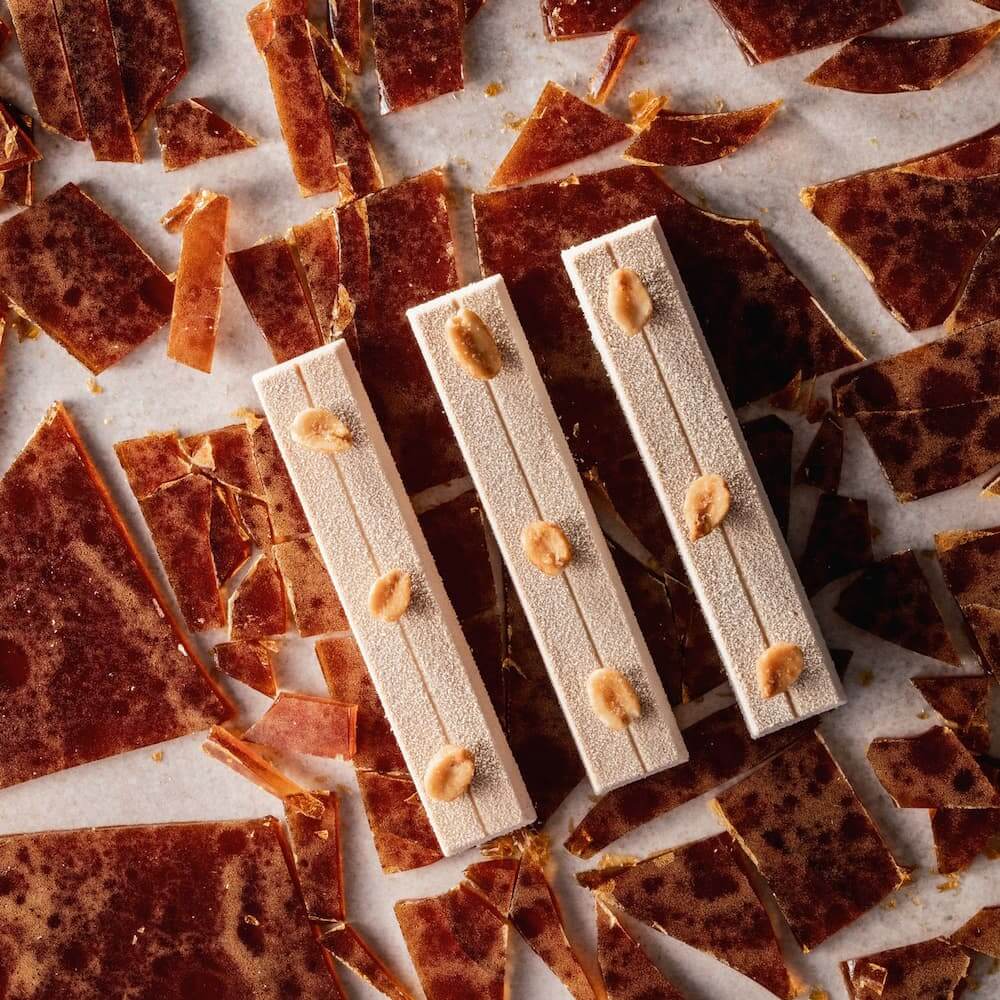
Need a large quantity of workable chocolate? Then it’s best to use the chocolate tempering machine. This method also requires adding Callets™ to melted chocolate to obtain the right crystalline structure in it.
GOOD TO KNOW
Why is fluidity so important?
The fluidity of your chocolate determines the thickness of the shell and the snap of your chocolate products: the more fluid your chocolate, the thinner and crunchier your shell will be.
Using chocolate with the right fluidity also saves time: you can cast large moulds in one go with less fluid chocolate. Chocolate with a higher fluidity is better for moulds with a lot of detail, but you’ll need to fill your mould with chocolate 2 to 3 times.
Why is it so important to pre-crystallise chocolate properly?
It helps chocolate harden, and gives it a beautiful satin gloss and a delicious snap. It makes chocolate contract during cooling, which makes it easier to unmould. Badly crystallised or uncrystallised chocolate will turn grey and won’t have an appetising gloss.
What is tempering or pre-crystallising?
The purpose of tempering chocolate is to pre-crystallise the cocoa butter in it, which is important to make your chocolate ready for processing. During tempering, the cocoa butter in the chocolate takes on a stable crystalline form. This guarantees a perfect finished product with a satin gloss and a hard snap. It also makes the chocolate contract during cooling, which makes it easier to unmould. If chocolate is simply melted (between 40 and 45 °C) and then left to cool down to a suitable working temperature, the finished product will not be glossy. If you make the small effort of bringing your chocolate to the right working temperature properly, you are guaranteed to get the desired end result. And that’s what we mean by tempering: bringing chocolate up to the right working temperature while making sure that the crystalline structure of the cocoa butter in it is stable. As you’ll discover below, the three key principles for proper tempering are time, temperature and movement.
Step 1
Melt your chocolate in the chocolate tempering machine (turn the thermostat up to 45°C) then lower the thermostat to ± 31°C (for dark chocolate) or to ± 29°C (for milk chocolate and white chocolate).
Step 2
Immediately add 5% Callets™ at ambient temperature (18-20°C).
Step 3
The machine mixes the Callets™ into the melted chocolate, distributing the stable crystals of the Callets™ thoroughly and evenly throughout. Do the Callets™ melt too quickly? That means your chocolate is still too hot. So add more Callets™ to lower its temperature and let the machine keep stirring them in.
Step 4
That's it: your chocolate is smooth, slightly thicker and ready for use! For tempering systems other than wheel-type machines, we recommend contacting your supplier.
Which Callebaut chocolate needs to be tempered?
Each variety or type of chocolate should be tempered before you use it to mould chocolates and hollow figures, or to enrobe cakes and chocolates. In short, whenever chocolate needs to have a beautiful satin gloss and a hard snap, tempering is absolutely crucial.
When you add chocolate to dishes as a flavour component (e.g. chocolate mousses or bavarian creams), it suffices to simply melt it without tempering. All our recipes clearly indicate if your chocolate should be tempered or not.

Need support with your chocolate confections?
- Find troubleshooting guides & tutorials
- Chat live with an advisor chef and find the right solution to your challenges



Comments